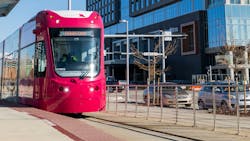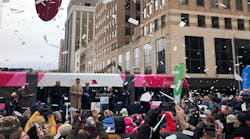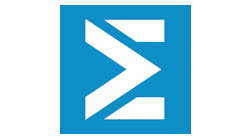The Central Oklahoma Transportation & Parking Authority (COTPA), better known by its brand name of EMBARK, has been helping Oklahoma City residents stay on the move since 1966. EMBARK has been recognized by the American Public Transportation Association as its 2016 Outstanding Public Transportation System (providing four million or fewer annual passenger trips) and the Oklahoma Transit Association’s 2021 Transit System of the Year.
The EMBARK system can serve as a study in many things: building brand awareness, delivering a successful voter-approved ballot initiative and becoming a mobility integrator. But above all, EMBARK has been consistent in its strategic planning and community outreach efforts all focused on delivering improved service.
“It’s important for us to position ourselves as the mobility experts for the community and the region and really to take that a step further,” said EMBARK Administrator Jason Ferbrache. “We've been trying to capitalize on and create the momentum for public transit in our community that we've seen over the past seven or eight years at all levels, from residents to city council, for improved public transit. We're absolutely focused on taking that challenge and responsibility and leveraging it as best we possibly can.”
Building Momentum
Ferbrache believes EMBARK’s momentum is propelled by three elements: a strong brand, an engaged community and support from the city council and board of trustees.
EMBARK, as a brand, was introduced in 2014, but the rebranding effort went beyond new graphics and marketing to a reinvention of mobility services in Oklahoma City that included new fixed routes for buses, free Wi-Fi on vehicles, improved frequencies to 30 minutes on nearly all routes and adoption of improved customer experience technology such as trip planning tools and real-time GPS.
“We actually felt like we were a different service than we were before [the EMBARK rebranding] and we've tried to back that up ever since 2014,” said Ferbrache.
A unique feature to the EMBARK network is the number of modes operated under its family of services, which include fixed-route buses, EMBARK Plus paratransit, Oklahoma City Streetcar, Oklahoma River Cruises, Spokies Bike Share, five parking garages, as well as transportation options EMBARK provides by working with different community organizations.
“One of the nice things about having multiple modes and multiple services within the EMBARK family is our ability to build positive transit experiences within our region. If we want to be seen as the mobility experts, the multiple modes create that opportunity within the community to cater to different customers,” said Ferbrache.
EMBARK regularly surveys the Oklahoma City community to understand how its services are viewed by riders and non-riders. The most recent survey was conducted in the fall of 2020 and resulted in high satisfaction marks among both transit users and non-users. Nearly 78 percent of riders said they were satisfied or very satisfied with EMBARK’s services, while 77 percent of non-riders feel EMBARK’s public transit service are valuable to the community.
Chris Tatham, CEO of ETC Institute, presented the 2020 survey results at COTPA’s July 2 board meeting and offered praise for the overall satisfaction rating earned by EMBARK.
“You see results that show [EMBARK] has done a great job sustaining a high level of satisfaction in the midst of a year where a lot of people were dis-satisfied with public transportation services because of concerns related to safety and COVID-19. You’ve done a great job of meeting those expectations,” Tatham told the board.
One indicator within the surveys that illustrates how woven into the region EMBARK has become is the belief by residents that transit is a valuable investment. In the 2020 survey, 83 percent of non-transit users said they strongly agree or agree that transit is important for a thriving community. The same respondents named serving populations with few transportation options and supporting economic development and access to jobs as the top reasons to invest in transit.
Of the riders who answered the customer survey, more than 50 percent use EMBARK services five or more times per week and that percentage jumps to more than 73 percent when three to four-day-per-week riders are included.
“We have a lot of individuals in our in our community who are more interested in public transit and options to move about our city than what we've seen in the past,” said Ferbrache. “There are options for people who do not own a vehicle or who do not want to drive their vehicle.”
The support shown for EMBARK from the community works in tandem with the backing the transit service receives from the city council.
“Our city council, as a whole, has been very supportive of public transit and that's evidenced by budget support and, I would say during the past five or six years, when City Council is deciding where to make additional investment, it's usually come down to a discussion between police and transit,” explained Ferbrache. “When you’re a city department and you’re being considered in the same group as public safety, that’s a big deal.”
Funding is the obvious upside, but being situated within the governance of the city provides EMBARK with practical benefits.
“We get a lot of back office support from the city with things like accounting, some HR services and audit services. We don't necessarily have to have complete divisions or departments set up within our agency for those functions,” explained Ferbrache. “When we have construction projects or planning efforts, we are able to use experts within city departments, who help us see how those things fit into a comprehensive plan of the city.”
However, the biggest benefit of working so closely within the municipality, according to Ferbrache, is the opportunity for capital investment.
“We would not have the OKC Streetcar, which is debt-free and was 100 percent locally funded without the city and community support,” says Ferbrache. “Whether General Obligation bonds or the transformational MAPS program, public transit continues to be one of the primary recipients of those capital programs.”
EMBARK is now engineering the region’s first bus rapid transit system. The first route was awarded $14.4 million from the USDOT Build Grant with the remaining balance locally funded by the City of Oklahoma City. The route is expected to be operational in late 2023.
“None of this would be possible as a standalone transit agency with 22 bus routes and no dedicated revenue sources,” said Ferbrache. “Ideally, we want to be self-sufficient financially, but where we are as an organization - working to modernize our fixed-route system and bringing new modes into the community that we’ve never had before - being a city department is extremely helpful.”
Strategic Planning
In 2005, COTPA published its 2030 Fixed Guideway Plan that provided a roadmap to implement a series of regional transit solutions, including bus enhancements, bus rapid transit (BRT), streetcar and commuter rail options.
“I love talking about that study; it’s provided reliable guidance for us and it’s still relevant as we’ve incrementally implemented the plan,” said Ferbrache. “The plan called for a better bus system, so in 2013, we partnered with Nelson Nygaard to recommend system changes, which led to our current improvements on the EMBARK bus system like improved frequencies and more direct routes. There is always room for improvement, but we did address the bus system and we certainly made significant improvements.”
Additional projects in the study include a downtown circulator, which was delivered in 2018 with the opening of the Oklahoma City Streetcar, several BRT corridors, the first of which is on schedule to open in two years and high-capacity transit that would use existing railroad right-of-way to add commuter rail to the region, which is being explored through efforts with the Regional Transportation Authority of Central Oklahoma.
“I think the plan itself helps us, as an agency, bring a lot of credibility to the table when we're having discussions about transit,” noted Ferbrache. “The final piece on that is the flexibility we have administering or implementing the plan.”
He points to the enhancements implemented on the bus system in 2014 to illustrate that the plan is not a checklist EMBARK is working through, but a roadmap of what transit services can best serve the community. The bus system modifications implemented in 2014 were studied, but with the changes that have occurred in the community with new trip generators and new major employers, the opportunity exists for EMBARK to revisit those changes and evaluate if further revisions are needed.
“Even though all the recommendations in the 2030 system plan have been implemented, we can still work on enhancing those services that have such as bus system, streetcar, and high-frequency corridors. That’s what makes the plan so resilient and relevant,” said Ferbrache.
This laser focus on continuous improvement to serve the community helped during the COVID-19 pandemic. While EMBARK did experience reduced ridership, it was not the steep decline experienced on a national level and Ferbrache did not hesitate to credit employees as a big factor to keeping transit users moving during the health crisis.
“Our employees came to work, kept transit running every day. We never missed a day of service, although we did reduce service for a short time” he said. “Another factor is how the pandemic impacted planning efforts and our staff did not slow down on any projects or plans.”
EMBARK performed a comprehensive operational analysis during the pandemic knowing the health crisis would draw to an end and wanting to ensure plans, such as further enhancements to the bus system and future facility needs, were understood.
“Our senior leadership team developed an employee driven transformation plan [dubbed The Road Map], which is a strategic business plan that will enhance and improve our culture through objectives and strategies. So far, about 25 percent of our frontline employees are involved in some type of project or task to help us bring this plan to fruition. We’re learning a new way to do business and continuing to move forward,” explained Ferbrache.
In addition to employee dedication, he believes the precautions applied when operating within a pandemic environment helped retain customers.
“One of the questions we asked in our survey was customers’ feelings about safety and their satisfaction with our COVID protocol and we had 77 percent satisfaction. We were able to maintain the trust,” said Ferbrache. “Lastly, we acknowledge the fact that we have a transit dependent customer base, particularly on the fixed-route side, but this is a reminder to us that we are an essential service and for some, we are their only way to access quality food, medical, and community aid.”
MAPS Funding
Where the 2030 Fixed Guideway Plan provides a roadmap to better transit, a voter-approved penny sales tax provides a portion of its funds to get there. The MAPS 4 program was approved in December 2019 and includes $87 million for transit over eight years. Of this funding, $10 million has been designated for bus stop upgrades, $12 million will go toward additional buses and traffic signal prioritization and the largest portion of the dedicated transit funds, $60 million, will provide advanced transit projects to the region.
“It's amazing having that type of long-term and voter-approved initiative out there. I think it motivates us and reinforces that we are a priority to our community and lets our employees know that public transit in Oklahoma City is not stagnant; it’s only going to improve and grow and get better from here,” said Ferbrache. “We do have our work cut out for us for the next 10 years, but we're looking forward to getting the job done.”
As Mass Transit reported in the December/January 2021 issue, EMBARK completed the installation of 100 bus shelters in Fiscal Year 2019, which represented a 55-percent increase in the number of covered stops. With the MAPS 4 funding for bus stops, EMBARK will be a system where more than half of its fixed-route stops will have shelters and all of its stops will have lighting
Customers will not have as long to appreciate the new sheltered stops because the program’s dedicated investments in additional buses will help deliver additional 15-minute high-frequency corridors to EMBARK’s fixed-route system.
To further improve reliability and frequencies will be the implementation of traffic signal priority. EMBARK has identified 491 signalized intersections within its system and, with current funding, believes it will be able to equip all its buses and at least half of those identified intersections with traffic signal priority.
“That’s where you can really make up ground and improve a fixed-route system without a whole lot of infrastructure, but with technology,” said Ferbrache. “The other thing people need to think about with traffic signal priority is, not only will it make our service more reliable and help us pick up a little time, but there is the safety aspect, as well. The less stops we make with automobiles right behind us, the safer we will be.”
The third transit-specific group of projects through the MAPS 4 program will deliver BRT corridors, park and rides and microtransit. Like the 2030 Fixed Guideway Plan, the MAPS 4 language provides EMBARK with the right amount of flexibility to best meet shifting transit needs.
“We purposely used language in [the MAPS 4] resolution was to not identify a certain corridor or a certain street. We know it makes sense to have a BRT serving south Oklahoma City but based on our community’s change, is the exact alignment studied in 2005 still the best option? Probably not, so we will go through an alternatives analysis and determine where a corridor would best serve the community,” explained Ferbrache. “I fully expect all three projects will come to fruition – additional BRT, park and rides and microtransit – but we have flexibility in how much we invest in each.”
The next big project coming quickly into reality is Northwest BRT, the city’s first BRT corridor. The project is currently in the 60 percent engineering design phase with engineering expected to be completed by next spring. Construction is scheduled to begin in 2022 with service beginning in the fall of 2023.
“For our organization, it's great and a unique opportunity, as a transit professional, where you're able to bring new modes to your community,” said Ferbrache. “We didn’t have streetcar before 2018, we’ve never done BRT and even things like park and rides – we do not have a dedicated park and ride in Oklahoma City for transit. There is going be a lot of ‘firsts’ for us as an agency and as a community in the next five to 10 years.”
When he contemplates what success looks like in the future for EMBARK, Ferbrache arrives on the concept of choice. Not only choice and transport options for the 63 percent of current riders who do not own vehicles, but for those who do have access to a private vehicle, but want to leave it parked.
“It also comes back to our vision, which is to be world class transportation that is accessible to all, and all want to access it,” explained Ferbrache. “When we have essential service easily accessible to those who need it and when you have people who have automobiles, but they choose to use transit, that's when we've done our job. That's when I feel like our board and the city council can really say ‘you made a difference here’.”
Non-Rider 2020 Survey Results
77% Feel EMBARK’s services are valuable to the community
83% strongly agree/agree that transit is important for a thriving community
78.7% believe it’s very important that transit serves low-income, disabled or senior populations with few transportation options
69% believe transit is very important to support economic development and access to jobs
51% believe it’s important to fund transit
68% have access to at least one vehicle
51% have a good or excellent impression of EMBARK
Rider 2020 Survey Results
55.3% have been riding area transit for more than two years
63.3% do not have a valid driver’s license
70.8% have an annual income below $20,000
79% are very satisfied or satisfied with a feeling of safety while riding the bus
77% are very satisfied or satisfied with EMBARK’s COVID-19 safety precautions and procedures
Credit: 2020 ETC Institute

Mischa Wanek-Libman | Group Editorial Director
Mischa Wanek-Libman is director of communications with Transdev North America. She has more than 20 years of experience working in the transportation industry covering construction projects, engineering challenges, transit and rail operations and best practices.
Wanek-Libman has held top editorial positions at freight rail and public transportation business-to-business publications including as editor-in-chief and editorial director of Mass Transit from 2018-2024. She has been recognized for editorial excellence through her individual work, as well as for collaborative content.
She is an active member of the American Public Transportation Association's Marketing and Communications Committee and served 14 years as a Board Observer on the National Railroad Construction and Maintenance Association (NRC) Board of Directors.
She is a graduate of Drake University in Des Moines, Iowa, where she earned a Bachelor of Arts degree in Journalism and Mass Communication.





